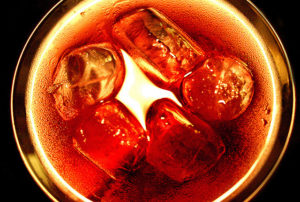Playlist
Show Playlist
Hide Playlist
Alcohols : Introduction
-
Slides 05 Chemistry Advanced Le Gresley.pdf
-
Download Lecture Overview
00:01 Right. Okay. Now, we’re going to be talking about alcohols. They have the general formula of ROH, when R is an alkyl group and OH is a hydroxyl group in this context. 00:13 In a moment, we’ll be talking about the nomenclature. 00:16 The origins of alcohol stems from the name al-kuhl in Arabic meaning volatile. 00:22 The nomenclature is shown here. In the example of 3-methyl-1-butanol, the final ‘e’ of the alkene homologous series is replaced with the -ol suffix “ol”. In this scenario, as we said before, when we actually have a group which takes priority, the numbering system relates to the carbon to which it’s nearest. In this case, the OH is attached in the case of the 3-methyl-1-butanol in the terminal position. The carbon to which the OH is attached, therefore, takes the number 1 counting backwards along the longest chain 2, 3, 4. This gives you 3-methyl-1-butanol. 01:05 When we have cyclic alcohols, such as in the case of cyclopentanol, we put cyclo in front of the name and the suffix remains the same. 01:16 At the bottom, you can see some examples of what are known as methyl alcohols: primary, secondary and tertiary. 01:25 The methyl-1 has only one member of its family which is methanol. We’ve come across this before. 01:32 The second one, where the OH group is attached to the terminal carbon on an alkane chain, is the primary alcohol. In this case, butan-1-ol although sometimes you’ll see it referred to as n-butanol. 01:46 The secondary alcohol, where indeed the OH is attached to a carbon which bears two alkyl groups, would, in this case, be butan-2-ol, otherwise known as sec-butanol. 01:59 And finally, the tertiary to which the OH is attached to a carbon-bearing 3 alkyl groups on it. In this case, the old nomenclature would have been tertiary butanol. However, the correct IUPAC nomenclature is 2-methylpropan-2-ol. 02:21 The structure of an alcohol can be shown here. And as we discussed in the previous lecture about haloalkanes, you can see that we have got an alpha carbon, to which the OH is directly attached, and also a beta carbon. 02:35 Pay particular attention to the polarisation of the oxygen-hydrogen bond shown in this case. This, of course, is a sigma molecular orbital and you have electronegativity on the oxygen which pulls electron density with it so that the oxygen itself is delta negative or partially negatively charged and the hydrogen is delta positive or partially positively charged. 02:59 This is important in the physical and chemical characteristics of this class of compound.
About the Lecture
The lecture Alcohols : Introduction by Adam Le Gresley, PhD is from the course Organic Chemistry.
Included Quiz Questions
What is the correct IUPAC name for CH3-CH(OH)-CH(C2H5)2?
- 3-ethylpentan-2-ol
- 3-ethylpentan-4-ol
- 1-methylbutan-1-ol
- 1,1-diethylpropan-2-ol
- Heptane-2-ol
Customer reviews
5,0 of 5 stars
| 5 Stars |
|
5 |
| 4 Stars |
|
0 |
| 3 Stars |
|
0 |
| 2 Stars |
|
0 |
| 1 Star |
|
0 |




